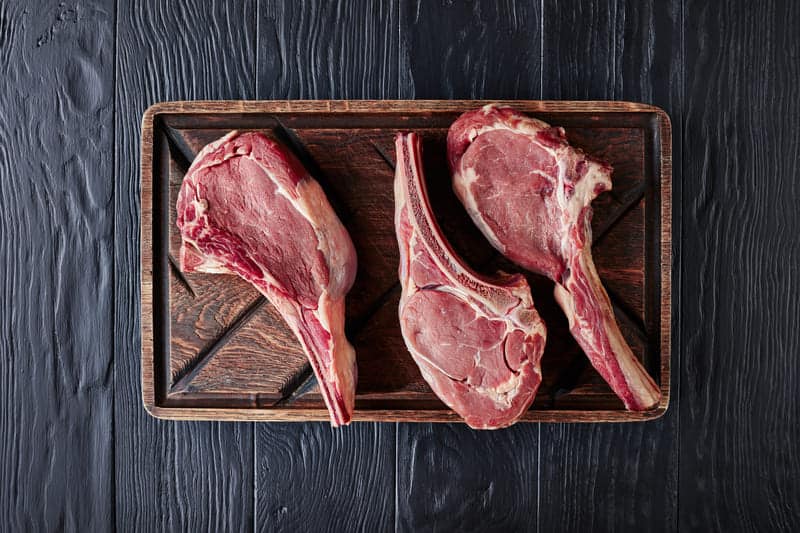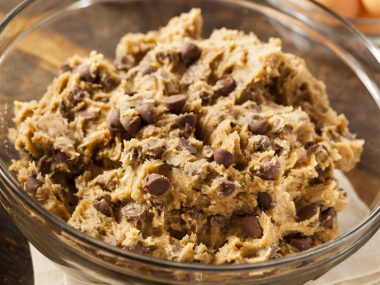I usually like to enjoy a perfectly-cooked and juicy steak because it has a delicious flavor and it is so tender that it melts in my mouth.
However, do you know that before the meat arrives on your table it undergoes many processes which determine its texture, flavor, quality, and price?
That is why when you are buying meat there are many different types of meat, made in different processes, with different flavors, textures, and prices.
To choose the one you like the most you have to try many different types of meat that are aged differently. Typically, meat can be wet-aged or dry-aged and which is better depends on your taste and personal preferences.
Dry-aged meat is regarded as meat with higher quality, so it also has a higher price. Wet-aged meat also has a good flavor which a lot of people like. It also has a lower price than dry-aged meat.
Let’s learn more about wet-aged and dry-aged below!
Wet-Aged Vs Dry-Aged: Comparison Chart
The main difference between wet-aged and dry-aged meat is the flavor and price.
There are a few factors you should consider when buying the right type of aged meat-like flavor, fat content, tenderness, juiciness, and how much you want to pay for this delicacy.
You can check the main differences between wet-aged and dry-aged meat in the table below.
| Features | Wet-aged | Dry-aged |
| Type of cuts | Lean boneless strip steaks, ribeyes, sirloins, t-bones, filets | Richly marbled bone-in ribeyes, porterhouse, bone-in strip steaks |
| Process | In vacuum-sealed plastic bags in the fridge at low temperatures | In controlled environment |
| Aging time | 7-28 days | 4-6 weeks |
| Flavor | Metallic, fresh | Nutty, slightly sour |
| Texture | Less tender | More tender |
| Price | Lower | Higher |
What Is Wet-Aged Beef?
Wet-aging is a relatively new process of aging meat which became popular when plastic bags became popular.
Wet-aged beef is meat that is cut, portioned, placed in vacuum-sealed plastic bags, and then kept to age in its juices. Beef is aged in refrigerators at low temperatures from7-28 days.
During the wet-aging process, the enzymes which are naturally present in the meat are breaking down the fibers of the meat making it tender. Wet-aged beef has more moisture than dry-aged beef therefore, the flavors are distributed evenly all over the meat.
Wet-aged beef is tender meat that has a traditional beef flavor that a lot of people enjoy. You can find wet-aged beef in the stores in vacuum-sealed plastic bags as less expensive compared to dry-aged beef.
Is Wet Aging Beef Worth It?
Wet-aging beef is a more affordable process. It costs less than the dry-aging process. And lean, thin cuts of beef have more benefits from wet-aging because they don’t dry out like when they are dry-aged.
In the wet-aging beef process first, the meat is put in vacuum-sealed plastic bags so it doesn’t lose moisture and weight like it does when it is dry-aged. It also doesn’t have to be trimmed to remove the mold that forms on the meat when dry-aged.
Wet-aging lasts shorter than the dry-aging process. When we put all these things together wet aging beef is worth it.
Is Dry-Aged Really Better?
Dry-aged meat has a richer flavor and is more tender than wet-aged meat.
The meat is aged in a temperature, humidity, and air flow-controlled environment to prevent it from spoiling. During the dry-aging process, the meat is losing its moisture and the lean meat shrinks around the fat.
The outer layers of the meat are dried out forming a crust, however, the inside of the meat is moist and tender. The good bacteria that is forming on the surface gives a rich, specific, and nutty flavor to the meat which intensifies if the meat is dry-aged longer.
When the dry-aging process is over, the outer layers of the meat are trimmed to remove the mold and the dry parts of the meat. With the trimming and losing moisture, the meat can lose about 30% of the weight it had before the dry-aging process.
All these processes need time, equipment, and a controlled environment but it is worth it because of the unique flavor that dry-aged meat has. So, dry-aged meat is better because it has a better flavor but it all depends on your taste.
What Is Better Dry-Aged Or Wet-Aged?
It depends on what taste you prefer. But some important characteristics such as the flavor, texture, and moisture content of the dried meat can also affect your choice.
Wet-aged meat has a nice tender texture and slightly metallic, fresh flavor because it is aged in its own juices and blood. Dry-aged meat, on the other hand, has a very tender texture as well as a specific, intense, nutty flavor which gets stronger if the meat is aged longer.
Wet-aged meat is often served in restaurants and sold in stores because of the lower production costs. Dry-aged meat costs more than wet-aged meat. You can find it in specialty butcher stores, groceries, and exclusive steak houses.
Can You Dry Age Wet Aged Beef?
You can dry-age wet-aged beef. However, you have to use a big cut with a fat cap on and equipment like a fridge (it is not recommended to store other foods in the same fridge), a rack, a small fan, and a tray.
Set up the fan in the refrigerator. Place the rack so the air can circulate all over the meat. Put the meat on the rack and place the tray underneath to collect the drippings from the meat.
Depending on the flavor and texture you want to achieve you can age the beef from 2-6 weeks or more and check it occasionally. Remove the meat from the fridge, trim the outer layer and cut it to the desired thickness. Your dry-aged beef is ready to grill.
Wet-Aged Vs Dry-Aged Flavor
Wet-aged and dry-aged meat doesn’t have the same flavor.
For instance, wet-aged meat has a slightly metallic, fresh flavor because it is aged in its juices and blood. Because wet-aging usually lasts shorter than dry -aging the meat is less tender and doesn’t have a slightly sour flavor like dry-aged meat.
Dry-aged meat is aged longer than wet-aged meat which gives the enzymes more time to tenderize and give a specific slightly, sour, nutty flavor to the meat.
You can choose between the rich and nutty beef flavor of the dry-aged meat if you want to try something good or the slightly metallic but well-known flavor of the wet-aged meat.
It is up to your taste and preferences!
Wet-Aged Vs Dry-Aged Ribeye
Ribeye is a perfectly marbled juicy, tender, and flavorful piece of meat that you can find with or without bone.
Ribeye with bone is a little difficult to cook because the meat next to the bone is cooking slower than the other parts of the ribeye. Thus, you will need more time to cook it, and you can also get unevenly cooked steak.
So, the boneless ribeye is easier to cook even though the bone gives moisture, flavor, and is keeping the shape of ribeye steak. Wet-aged and dry-aged ribeye have different flavors and textures depending on how long they are aged.
Dry-aged ribeye is characterized by a very tender, moist texture and beautiful earthy, nutty slightly sour flavor which intensifies if aged longer. While wet-aged ribeye has a slightly metallic, fresh flavor and tender texture.
They will both turn into a tender, juicy and delicious steak. But because dry-aged ribeye is aged longer, it will have a more tender texture and intense beefy flavor.
Summary
Wet-aged or dry-aged meat is both delicious and good in its way.
If you are buying wet-aged you should try dry-aged meat, compare its flavors and textures, and then choose your favorite. Trying something new can help you discover new flavors and dishes.
Wet-aged or dry-aged meat, which is your personal favorite? Share your thoughts in the comment section below!


